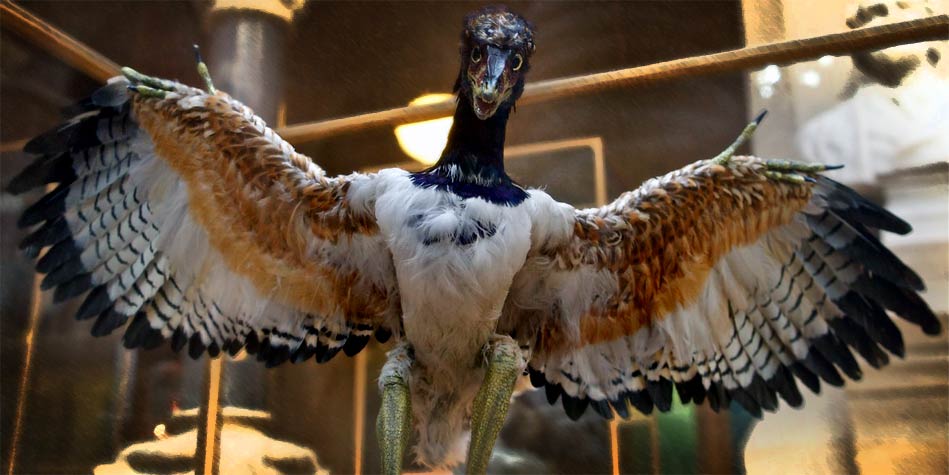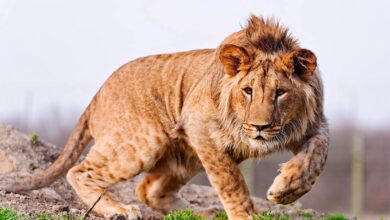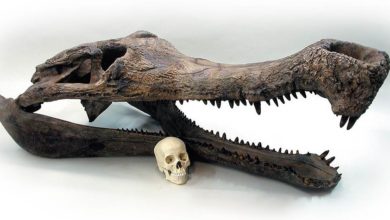Archaeopteryx – the first bird in the history of the world
The oldest known bird
Despite the fact that Archaeopteryx fossils were discovered over 150 years ago, this animal remains a puzzle for the scientists. Presently the largest secret for the researchers is this prehistoric creature’s life style. Although it is considered an ancestor of today’s birds, it has not been established yet whether it was capable of flying as present-day birds are.
Although Archaeopteryx had been accepted by scientists and popular books as the oldest known bird (the first bird), potential older have been identified, such as Anchiornis, Aurornis or Xiaotingia.
Classification
- Kingdom: Animalia
- Phylum: Chordata
- Clade: Dinosauria
- Order: Saurischia
- Suborder: Theropoda
- Clade: Avialae
- Family: †Archaeopterygidae
- Genus: †Archaeopteryx
- Species:
- Archaeopteryx lithographica
- Archaeopteryx siemensii
Most recent analyses indicate that the Archaeopteryx could be classified as a species of the Avialae clade, which consists of animals closest related to the present-day birds. However some researchers claim that this animal belongs to the Deinonychosauria group, which would place it closer to raptors or troodontids. Withal, the official classification deems Archaeopteryx to be an Avialae bird.
Conceivably Archaeopteryx is the one link between dinosaurs and modern birds.
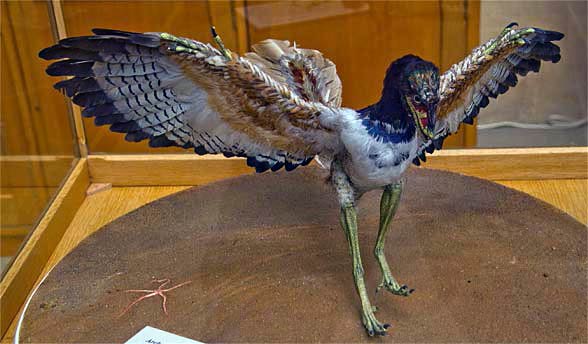
Discovery
A single Archaeopteryx feather was found in Germany in 1860. The first fossils, lacking head, were not found until a year later (1861). In 1863 this creature was officially named. Today it is believed that the primarily found feather could belong to a completely different dinosaur.
The discovery of Archaeopteryx, which proved to be the missing link between dinosaurs and birds, has significantly hastened the acceptance of Charles Darwin’s theory of evolution, announced in 1859 in the air of controversy.
Range
Archaeopteryx lived in the Late Jurassic, about 150 million years ago. It inhabited the regions currently being the southern Germany territory. Nevertheless Europe was an archipelago of islands scattered over a warm ocean at that time – much closer to the equator than presently.

Characteristic features
Despite having many features characteristic for present-day birds, Archaeopteryx had also many traits distinctive for dinosaurs of its time.
Archaeopteryx was as large as a modern raven. It had a disproportionally long tail and quite large wings, each equipped with three fingers with claws. It also had jaws full of sharp teeth.
Asymmetric feathers grew on its wings and tail, their arrangement was similar to modern birds’ plumage. They allowed the animal to actively fly, however there are no means of verification for such a theory.
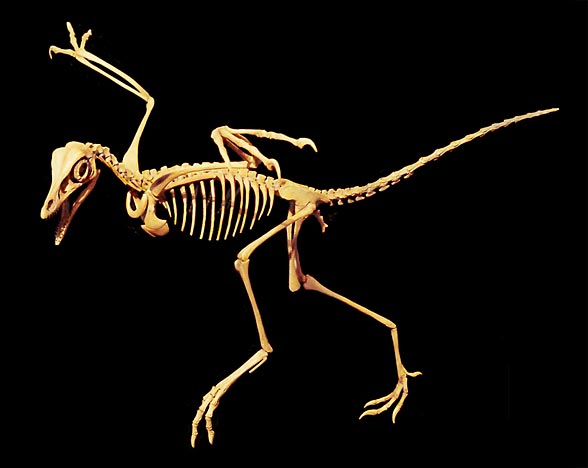
Archaeopteryx’ legs had 4 toes on their ends, one of which was opposable to the others. The second digit was larger than the rest, as for raptors.
A probable feather color of Archaeopteryx was not established until 2011. Microscope analysis and X-ray allowed to detect a structure in melanosomes in the feather from 1861. It was subsequently compared with 87 species of presently living birds.
Such a comparison led to a conclusion that Archaeopteryx was most likely completely black.
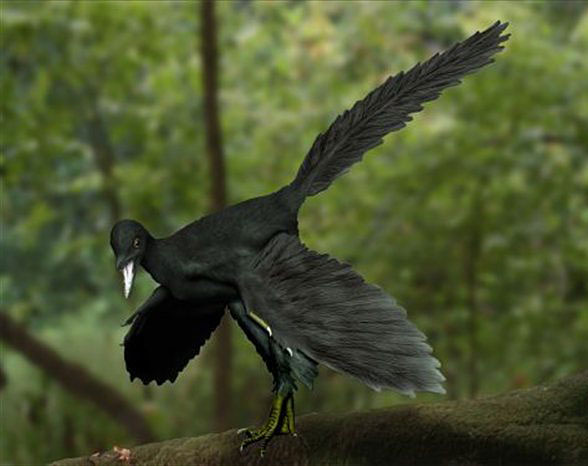
Could Archaeopteryx fly?
Asymmetrical feathers on its wings, or even their dark coloration which could reinforce the feathers, helping them to adapt to flying would suggest that this animal was capable of performing an active flight.
On the other hand, a flat sternum, and elongated ribs, which are distinctive for reptiles could obstruct the ability to fly. Archaeopteryx could also balk at the act of flight due to a much weaker feather structure than in case of modern birds.
Furthermore, the brain analysis has proven that Archaeopteryx had a larger brain than the dinosaurs of its time. It had highly developed brain areas responsible for hearing and motor skills, which shows that Archaeopteryx had most of the abilities essential for flying, like spatial orientation, well developed balancing skills and coordination.
Therefore the researchers stated that Archaeopteryx had a brain matching modern birds’ brains in 78%. Still it remains unclear whether this animal could actively fly, and if so, how – only gliding or flapping its wings.
Size of the Archaeopteryx’ wings only provides the information that if it could actually fly, the flight would be terribly slow.

Diet
Archaeopteryx was a carnivorous animal. It mostly hunted for lizards, frogs, beetles and even mites (arachnids). Having a sharp and relatively long beak allowed it to pick insects out of its own body.
Despite having sizable claws, researchers claim that Archaeopteryxes did not use them actively to kill. Archaeopteryx’ prey was mostly small animals, which could be killed with its beak.
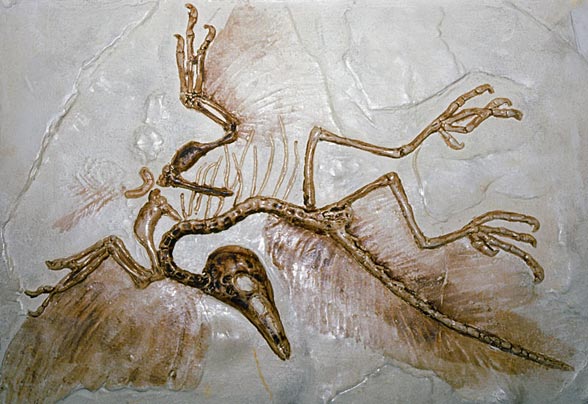
Life style
The life style of this prehistoric animal remains a mystery to the specialists. Establishing it is hardly possible without the knowledge of whether Archaeopteryx could actively fly or not – without such information we do not know if it spent most of its time in the trees or on the ground.
Anyhow it was most likely a ground animal, which could flee into the trees when threatened.
Some experts say that Archaeopteryx was a coastal species and that it hunted in the seaside regions.
Conceivably it had a circadian rhythm as most of modern birds.

Characteristics / size
Many people believe that this prehistoric bird was much larger than those observed nowadays. In actuality, in terms of size it was similar to modern ravens, crows and pigeons.
- Body length: about 50 cm (1 ft 8 in)
- Weight: from 0.8 – 1 kg (1.8 – 2.2 lb)
- A newborn nestling most likely weighed about 43 grams.
- Temporal range: 150.8 – 148.5 million years ago (Tithonian, Late Jurassic)
- Areas of occurrence: present-day Germany (Europe)
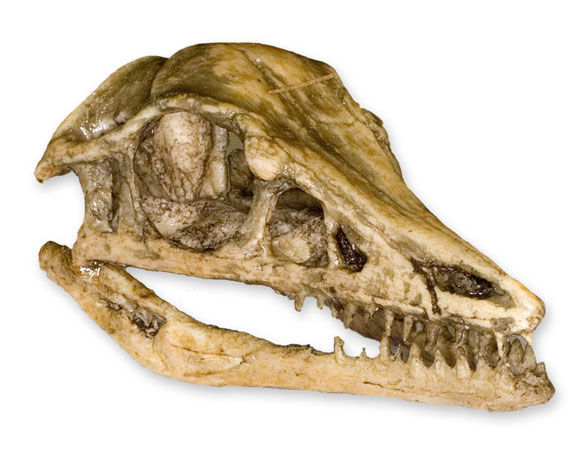
Archaeopteryx – interesting facts
- An asteroid belt discovered in 1991 was named after this species.
- It was long believed that a modern analog of Archaeopteryx could be the Guiana’s national bird – hoatzin (Opisthocomus hoazin).
- Recent studies has shown that the Archaeopteryx needed as much as 3 years to reach its mature size – it is a much longer period than in case of modern birds.
- In 2011 a commemorative 10 € coin was struck in the 150 anniversary of the discovery of Archaeopteryx’.
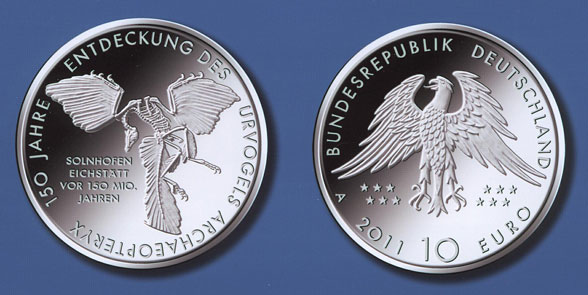
Recommended
- Extinct animals
- Animals & dinosaurs records
- The fastest animals – Top 100
- The fastest birds – Top 10
- The heaviest dinosaurs – Top 10
- The longest dinosaurs. Sauropods Top 10
- The longest predatory dinosaurs. Theropods Top 10
- The heavies predatory dinosaurs Top 10
- The longest and largest ornithopods
- The longest and largest ceratopsians
- The shortest sauropods
- The smallest dinosaurs – Top 10

